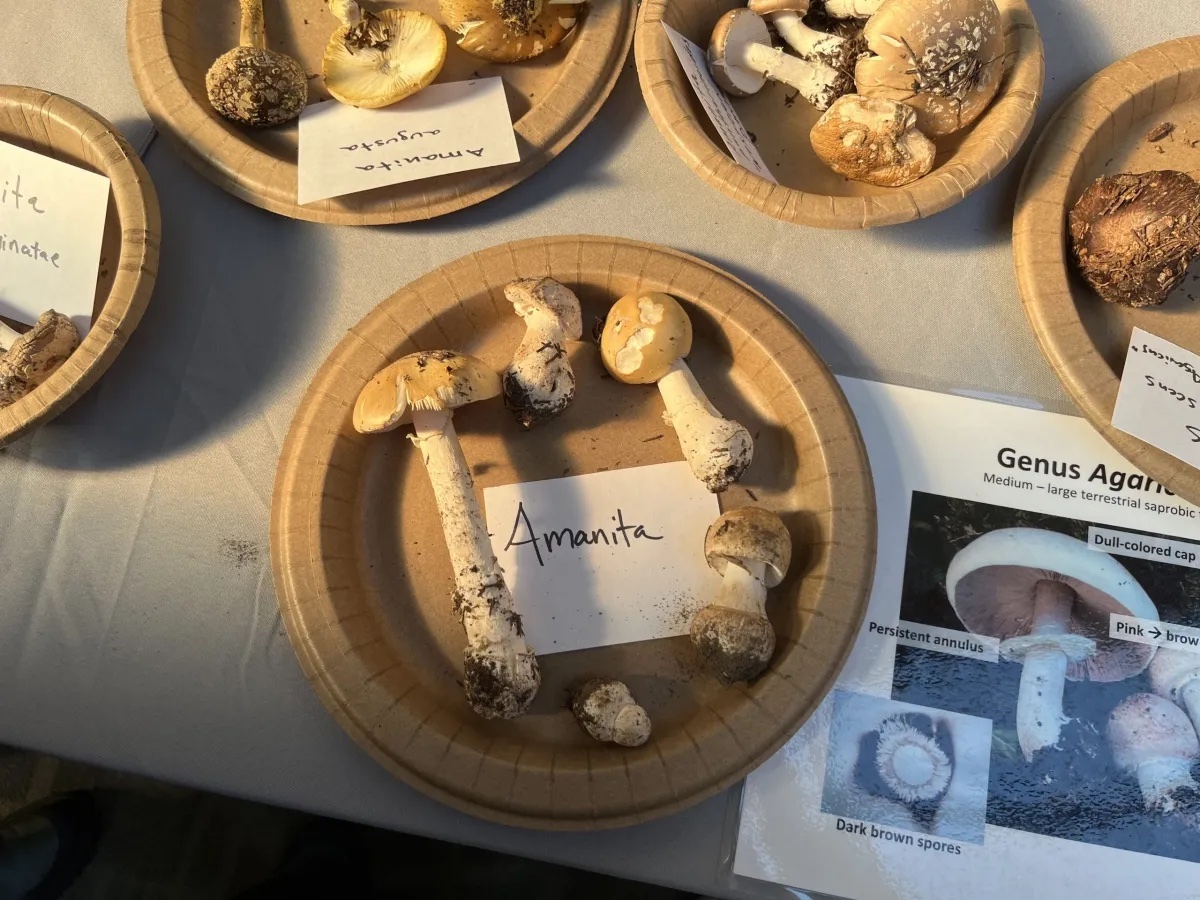December pours spread fungal spores.
The rainy season means a blooming of a colorful array of mushrooms — some of which are deadly — in wooded areas in and around Oakland.
California Poison Control System operates a free hotline at 1-800-222-1222
As it does every year around this time, the East Bay Regional Park District (EBRPD) is warning of the danger posed by toxic mushrooms — reminding park visitors that two of the world’s deadliest types of shrooms thrive in the East Bay: the Amanita phalloides (death cap) and the Amanita ocreata (Western destroying angel).
Both are associated with oak trees, and can be found growing anywhere oak roots are present, according to the park district. Both the death cap and the destroying angel contain amatoxin, a lethal chemical compound that causes liver failure. Symptoms of mushroom poisoning typically appear around 12 hours after consumption.
Mushrooms tend to thrive after heavy rains, but when it comes to deadly amanitas, it’s not a hard and fast rule, Debbie Viess, a retired zoologist who founded the Bay Area Mycological Society, told Berkeleyside last year.
“Mushrooms don’t behave the same all the time. They have windows of fruiting and they have times that they like to fruit,” Viess said. “Amanitas share resources with many other mushroom species on the same tree. Sometimes they take turns, and sometimes they compete, so there’s really no predicting what’s going to come.”
Other species of mushrooms, including the Lactarius rubidus (candy cap) — great in ice cream — and the plump, orblike Calvatia gigantea (giant puffball) — which can be sliced into discs and turned into a “pizza” — also thrive in the East Bay’s parks. But if you’re hoping to forage any, you’ll have to do it elsewhere, as mushroom collecting is prohibited in Tilden and other EBRPD parks.
Experts generally advise against eating foraged mushrooms — especially when it’s one you can’t identify with utter certainty.
The California Poison Control System, which took 71 calls for human mushroom exposures in Alameda County in 2021 and 2022, advises people to use caution and eat mushrooms from grocery stores, not friends. Most of those calls came from patients between 1 and 3 years old and those in their 20s, who were presumably “getting into stuff more deliberately,” CPCS executive director Stuart Heard has told Berkeleyside.
In 2016, there were 1,328 emergency department visits nationwide and 100 hospitalizations from accidental poisonous mushroom ingestion, according to a 2021 report by the Centers for Disease Control and Prevention.
Pets are also at risk. Last January, one Berkeley resident spoke out to warn others after her puppy died from eating a death cap in Codornices Park. A Berkeley animal hospital said it sees about 20 suspect pet poisonings annually.
To safely learn more about fungi, explore the East Bay Regional Park District’s toxic mushroom page(which contains handy photos of mushrooms to avoid) or visit the Tilden Fungus Fair on January 20 and 21, from 10 a.m. to 4:30 p.m. at the Tilden Nature Area.

